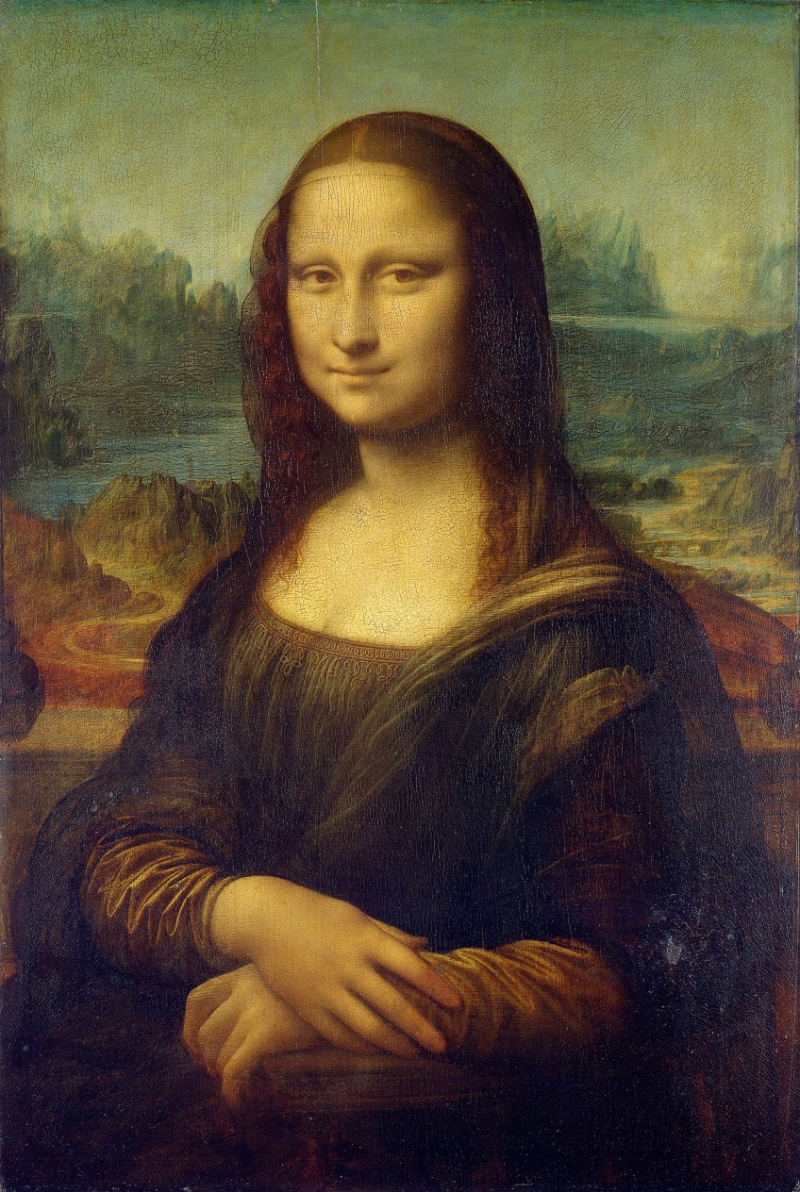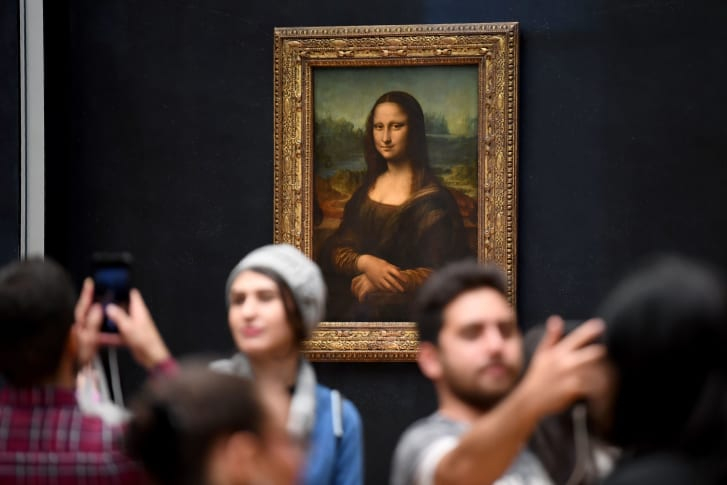Mona Lisa
Since Leonardo da Vinci created the Mona Lisa in the early 1500s, it has been widely regarded as the most famous painting in the entire world. Lisa del Giocondo, a wealthy Florentine family member, is honored by having the painting bear her name. Vincenzo Peruggia, a worker at the Louvre who was an Italian nationalist and thought the Mona Lisa should be given back to Italy, stole the painting in 1911. Peruggia managed to conceal the artwork in his apartment for two years before being discovered when he tried to sell it to Florence's Uffizi Gallery. The Mona Lisa is once again on display at the Louvre in Paris, where 6 million visitors view the artwork annually.
Leonardo's sfumato style of soft, finely shaded modeling, which is characterized by a female subject dressed in Florentine garb and seated in a surreal mountainous setting, is beautifully demonstrated in this portrait of a woman. The Mona Lisa has received praise from people all around the world for her enigmatic appearance, which is both alluring and remote.
Leonardo da Vinci was one of the first artists to use aerial perspective, and the portrait was among the first to show the subject in front of a made-up scene.
The enigmatic figure is seated in a space that appears to be an open loggia with black pillar bases on either side. Mountains covered in snow may be seen behind her in a vast panorama. The only indications of human presence are winding roads and a distant bridge. The hazy edges, flowing shapes, startling contrasts of light and dark, and a general sense of calmness define Da Vinci's style. Given the expressive harmony da Vinci achieved between person and surroundings and the fact that the Mona Lisa represents an ideal rather than a real woman, it is questionable whether the painting should be referred to be a traditional portrait.
The sitter's slight grin and the general harmony of the piece communicate the idea of a connection between people and nature.
Artist: Leonardo da Vinci
Estimated date: 1503 to 1519
Where to see it: Louvre Museum (Paris)












